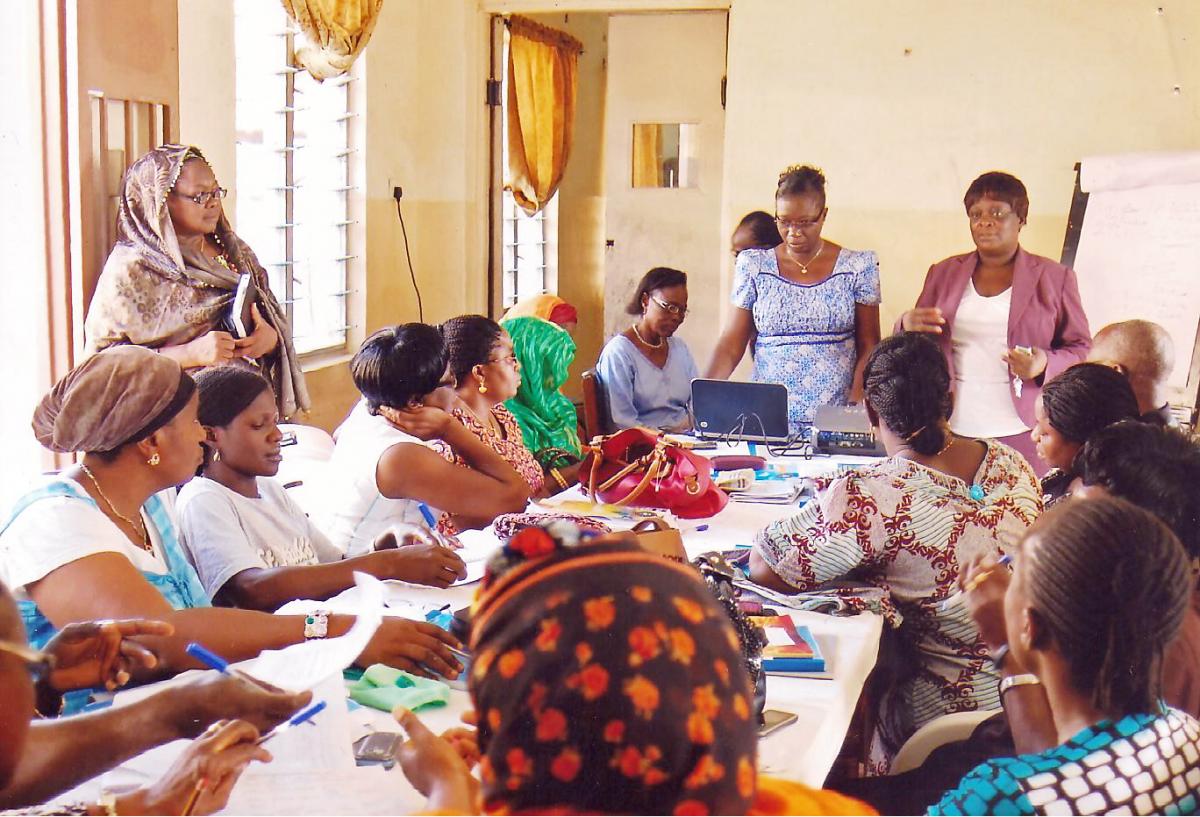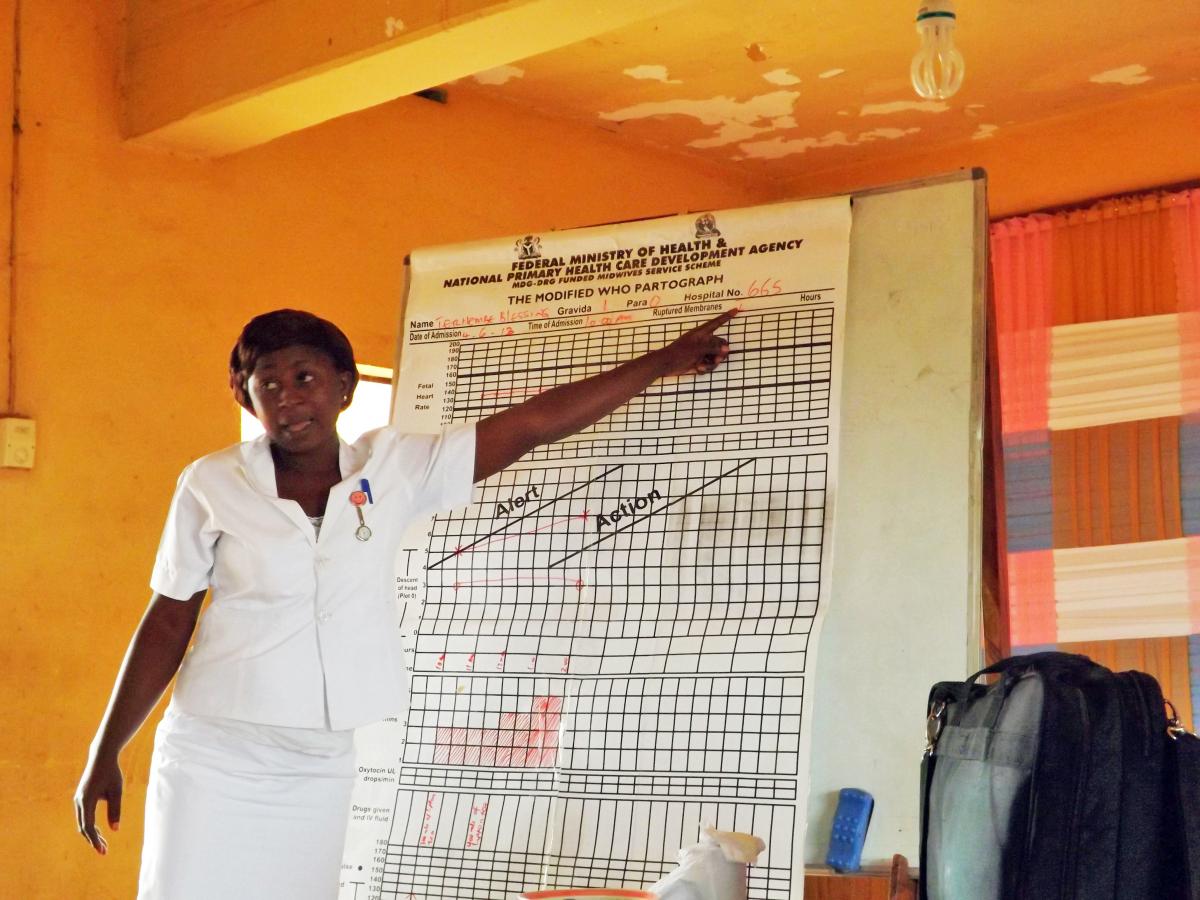Blog

Picturing Our Work: Teaching Teachers to Save Lives
July 2013 by Devika Chawla with Heather Ross
- Login to post comments
-

 For millions of women in the world, giving birth is one of the biggest threats to their lives. Nigeria has one of the highest maternal mortality ratios—approximately 630 women die for every 100,000 births. Having a trained health worker present during the birth can make the difference between life and death for both the mother and the baby. But the challenge lies in ensuring that health workers are present, ready, connected, and safe.
For millions of women in the world, giving birth is one of the biggest threats to their lives. Nigeria has one of the highest maternal mortality ratios—approximately 630 women die for every 100,000 births. Having a trained health worker present during the birth can make the difference between life and death for both the mother and the baby. But the challenge lies in ensuring that health workers are present, ready, connected, and safe.
CapacityPlus’s recent work in Nigeria focuses on ensuring health workers are “ready,” meaning that they have the necessary motivation, competencies, and support to meet the needs of their clients and communities. When the CapacityPlus team asked faculty and administrators at schools of midwifery and health technology how the project could support them, the most common answer was, “Train our teachers.”
Sylvestor Ashikabu, an administrator from the School of Health Technology at Keffi, put it well: “Teach a woman and you teach a generation. Teach a teacher, and you teach a nation.”
The CapacityPlus team took this advice to heart and arranged for faculty at the schools to receive training through a new course called Life Saving Skills (LSS). This three-week course, developed in cooperation with Nigeria’s Ministry of Health and a number of nongovernmental organizations, trains health workers to deal with challenges during birth that commonly cause maternal mortality and morbidity in Nigeria. CapacityPlus now works with 11 schools in Nigeria that train either midwives or community health extension workers and invited faculty members from each of the schools to participate in the LSS training.

During the training, participants spent many hours in maternity wards working in teams to manage women’s labor; trainers observed participants’ clinical skills and corrected them as needed. After each shift, the class gathered for a debrief session, as seen in the photo above, which involves each participant opening themselves for critique by the trainers and by the other participants.
“This was fascinating to me, as all of the participants were teachers themselves,” remarks CapacityPlus’s Heather Ross, who co-led these efforts with her Nigerian counterpart, Pius Uwamanua. “Everyone had two goals: to get better at these skills and to improve the training they will give to their own students.”
Another aspect of the training focused on the measurement tool seen in the photo below: the partograph. This tool serves as a graphic representation of labor and allows a health worker to accurately track important measures during labor, such as uterine contraction, cervical dilation, and blood pressure. It is an elegantly simple tool and has the potential to save many lives, if health workers are effectively trained to use it.

The partograph allows a health worker to know when certain measures are in the normal range during labor and when further action is required. For example, the health worker will consistently measure the mother’s blood pressure during labor and record these data on the partograph. If the blood pressure crosses a black lined marked “Action,” the health worker knows that further action is necessary to avoid eclampsia (one of the leading causes of maternal mortality in Nigeria).
The LSS course was administered simultaneously in Ibadan for community health extension worker faculty and in Makurdi for midwifery faculty. As the faculty pass along what they learned to their students, health workers in Nigeria will be ready to provide high-quality maternal health services aimed to save more mothers and babies in their communities.
Related items:
Photos by Heather Ross


